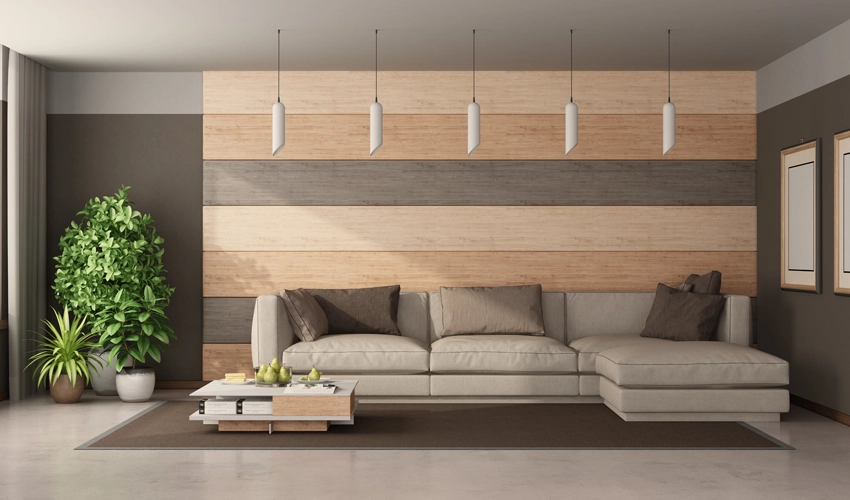
Wood paneling has seen a revival in modern interior design, becoming a trending choice for homeowners and designers alike. Its ability to combine functionality with aesthetics has made it a staple in both residential and commercial spaces. Once associated with rustic or traditional designs, wood panelling has re-entered the spotlight with contemporary twists, offering endless possibilities to enhance the appeal of interior walls.
This article explores the benefits of using wood paneling and how it brings warmth and natural beauty to interiors.
Creating a Cozy and Inviting Atmosphere
One of the most notable features of wood paneling is its ability to transform a space into a warm and inviting environment. Natural wood tones, ranging from rich mahogany to soft pine, radiate a sense of coziness that few other materials can replicate. By incorporating wood paneling, interior spaces feel less sterile and more personal, fostering a welcoming ambiance.
Studies in interior design suggest that natural elements, such as wood, evoke positive emotional responses. Wood paneling taps into this phenomenon, creating spaces that foster relaxation and comfort, whether it’s a living room, a bedroom, or even an office environment.
A Sustainable and Durable Option
Wood paneling is also celebrated for its sustainability and durability. Many wood panels are sourced responsibly, with manufacturers prioritizing eco-friendly practices. Additionally, wood is a renewable resource, making it a greener option compared to synthetic materials.
Durability is another standout feature of wood paneling. Unlike paint or wallpaper, wood panels can withstand wear and tear over time. When properly maintained with finishes, they resist damage from moisture and surface scratches, ensuring longevity. This makes them an excellent long-term investment for interiors.
Versatile Design Choices and Customization
Modern wood paneling offers unparalleled versatility in design. Homeowners can choose from a wide range of patterns, finishes, and wood types to achieve their desired aesthetic. Horizontal panels create a contemporary look, while vertical panels add height and visual dimension to a room.
Wood paneling can also be customized with unique textures, such as distressed or smooth finishes. These customizable elements make it suitable for diverse design preferences, whether the goal is minimalist sophistication or classic elegance.
Furthermore, beyond natural wood tones, panels can be stained or painted in virtually any color. This ensures they can complement any design palette and seamlessly blend with other interior elements.
Enhancing Acoustics and Insulation
Wood paneling is more than just visually appealing; it also offers practical advantages. It enhances the acoustics of a room by minimizing echoes and absorbing sound. This feature makes it particularly valuable in spaces like libraries, meeting rooms, or home theaters, where sound quality matters.
Additionally, wood paneling provides thermal insulation benefits. It helps keep rooms warm in colder seasons by retaining heat, making it an energy-efficient choice for interior walls.
Adding Value to Property
When it comes to home improvement, features that boost property value are always desirable. Wood paneling is a prime example. Its timeless appeal and functional benefits can increase the market value of a property. Homes with high-quality wood paneling are often seen as more luxurious and well-designed, which appeals to prospective buyers.
A Timeless Design Element
Unlike fleeting interior design trends, wood paneling has stood the test of time. It continues to evolve with the changing preferences of homeowners, maintaining its relevance across decades. Whether used in modern urban apartments or country-style homes, wood paneling delivers an enduring charm that adapts to a variety of styles.

